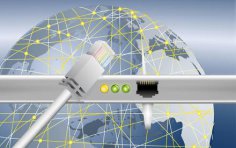
The National Oceanic and Atmospheric Administration has deployed five compact, unmanned scientific research vessels near the U.S. Virgin Islands to better understand how hurricanes develop and behave.
“The introduction of this technology marks a new milestone in NOAA's efforts to improve the way it collects information to improve research and forecasting,” the agency said Wednesday.
NOAA is partnering with the University of Southern Mississippi and robotics company Oshen to implement the project.
The joint team intends to launch additional C-Stars robotic platforms in the fall, ahead of the potential storm season.
Experts note that successful testing of these devices could open up new prospects for monitoring and studying tropical cyclones.
“Accurately determining weather conditions at the interface of the ocean surface and the lower atmosphere is critical to predicting hurricane intensity,” said Greg Foltz, an oceanographer at NOAA's Atlantic Oceanographic and Meteorological Laboratory.
The autonomous robotic floating stations are the latest step in NOAA's technology for studying the elements. The agency already uses manned aircraft and marine systems to obtain data used in hurricane modeling.
C-Stars systems use a combination of power from onboard solar panels and wind turbines, are equipped with low-power thrusters for maneuvering, and transmit collected data to specialists who generate detailed images and video footage for analysis.
Modern unmanned platforms are already being used by scientists to map the ocean floor, monitor marine life populations, quickly assess the effects of tornadoes, and predict algae blooms and oxygen-deficient zones.
Sourse: www.upi.com





